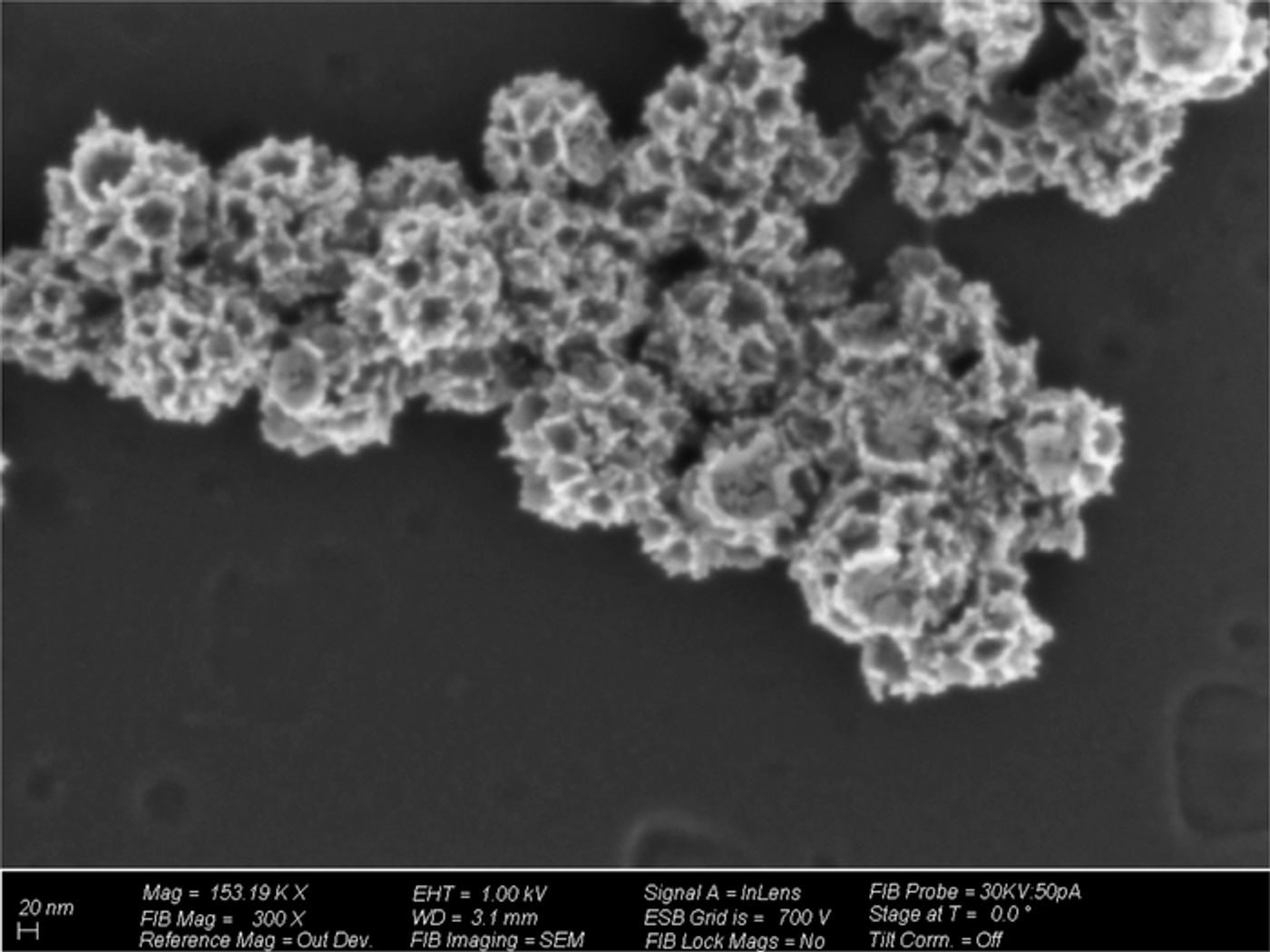Using Gold Nanoparticles to Treat Cancer
During cancer treatment, the administered drugs kill the tumors but often lead to undesirable side effects for the patients. However, a recent study published in ACS Applied Materials & Interfaces examines how gold nanoparticles can administer cancer drugs with not only incredible accuracy but could also drastically decrease the likelihood for harmful side-effects that are traditionally found with cancer drug treatments.
Image of the gold nanoparticle drug delivery system examined for this study. (Credit: Stevens Institute of Technology)
“Gold is very stable, so it’s the perfect material for drug delivery,” said Dr. Hongjun Wang, who is a professor of biomedical engineering at the Stevens Institute of Technology, and a co-author on the study. “Using this approach, we’re able to deliver drugs much more precisely and get much better clinical outcomes.”
For the study, the researchers tested the gold nanoparticles on cancer-stricken animals and monitored the results. Th study’s findings demonstrated no indication of toxicity and zero detection of the drugs within the bloodstream of the animals. In contrast, it has been found that 50 percent of individuals under traditional drug treatment experience detectable levels of toxicity in their bloodstreams. This reduced level of toxicity can be attributed to the selective delivery of the drugs, meaning that a reduced dosage is required and less drugs that are leaked into the bloodstream.
The researchers also discovered a longer period of the drugs circulating in the bloodstream, which could result in reduced dosage intervals for patients. Positive responses in lymphoma tumors during the animal studies compared to non-treatment methods could also result in better results for human patients, as well. Along with using the nanoparticles in applications involving light, it was found that loading the nanoparticles with drugs proved to be both rapid and accurate.
While this study focused on animals, Dr. Wang says the goal is to administer this new drug delivery method to human cancer patients, someday.
“We’ve shown this works in animals — now we need to show it’s safe in people, too,” he said.
What new discoveries will scientists make about cancer drug delivery in the coming years and decades? Only time will tell, and this is why we science!
Sources: ACS Applied Materials & Interfaces, Stevens Institute of Technology
As always, keep doing science & keep looking up!









